Join the Best Workday Training in Bengaluru to Learn, Practice and Suceed
Workday Adaptive Planning Training in Bengaluru
Training Blueprint
Why Businesses Choose Workday’s Adaptive Planning for Powerful Data Management
For instance, Workday Adaptive Planning is an excellent tool for business planning. Ranging from lowering roll-ups modifications to facilitating the account setup sequence, the software is well-packed with features that are very simple to use.
Moving forward with the tools that come with adaptive planning, companies can automate and improve their financial processes, thereby experiencing a leaner operation.
Workday Adaptive Planning
If you have ever wondered how this resourceful tool can develop your financial and operational reporting, here you are!
Workday Adaptive Planning is a suitable way to structure reports productively. When you create a report and send it to users, they can open it in the shared section.
Clicking on ‘shared reports’ will display various reports that have been previously generated. These reports are kept in concrete folders, the names of which are selected systematically to facilitate easy retrieval.
Workday Adaptive Planning is one of those cloud-based platforms that can be easily overseen, set up, and has a high level of data security and can be learnt easily through Workday Adaptive Planning Training in Bengaluru.
One chief advantage of the existing system is that, unlike typical Surpass files, the reports open directly within the system, eliminating the need for additional software.
On the other hand, you can still export them to Top or PDF if necessary.
One of the points that we will centre on is the difference between sheets and reports in the Workday Adaptive Planning tool.
The reports provide a structure to the data, and users can also make direct modifications when they open the sheets section and then apply those for punctual updates.
The process maintains data integrity while also enabling employees to access all their data.
The situation shall be as follows: you have a sheet for monitoring your income and expenditure, and in addition to read-only access, you also want to delegate some users the right to make modifications.
Workday Adaptive Planning offers you the ability to create reports tailored to your specific needs. Such a report will have limited access. People who rely on perceptions can use the report without changing the data.
Furthermore, another perk of Workday Adaptive Planning is that it lets power users appraise. If you are a power user, you can utilise various filters, conduct monthly or annual analyses, and even hide specific accounts or columns as needed.
Conditional highlighting is a facet in Workday Adaptive Planning, just as it is in Outshine. You can set colour-coded indicators of the exact nature—green for good, red for bad, and so on.
The graphical representation (in colours) then leads to the quick discovery of evidence that facilitates your decision-making process.
Moreover, Workday Adaptive Planning supports advanced reporting capabilities, including variance analysis, version comparisons, and the ability to drill down for detailed insights.
With the drill-down detail, users can now uncover multiple revenue data points, including the balance of sales from various product features, accounts, and/or regions.
Additionally, it simplifies the reporting process for end-users. The software’s conditional formatting tool allows you to apply personalised settings to the reports displayed on the screen, even if you are familiar with Excel or other tools, making the data easier to access and more feasible.
Workday Adaptive Planning’s sense of its definite strong point is directly related to the execution of a comprehensive reporting strategy that aligns with unambiguous business needs.
It’s a very flexible offer if you need to create financial or operational reports; the software is competent in managing data productively for you.
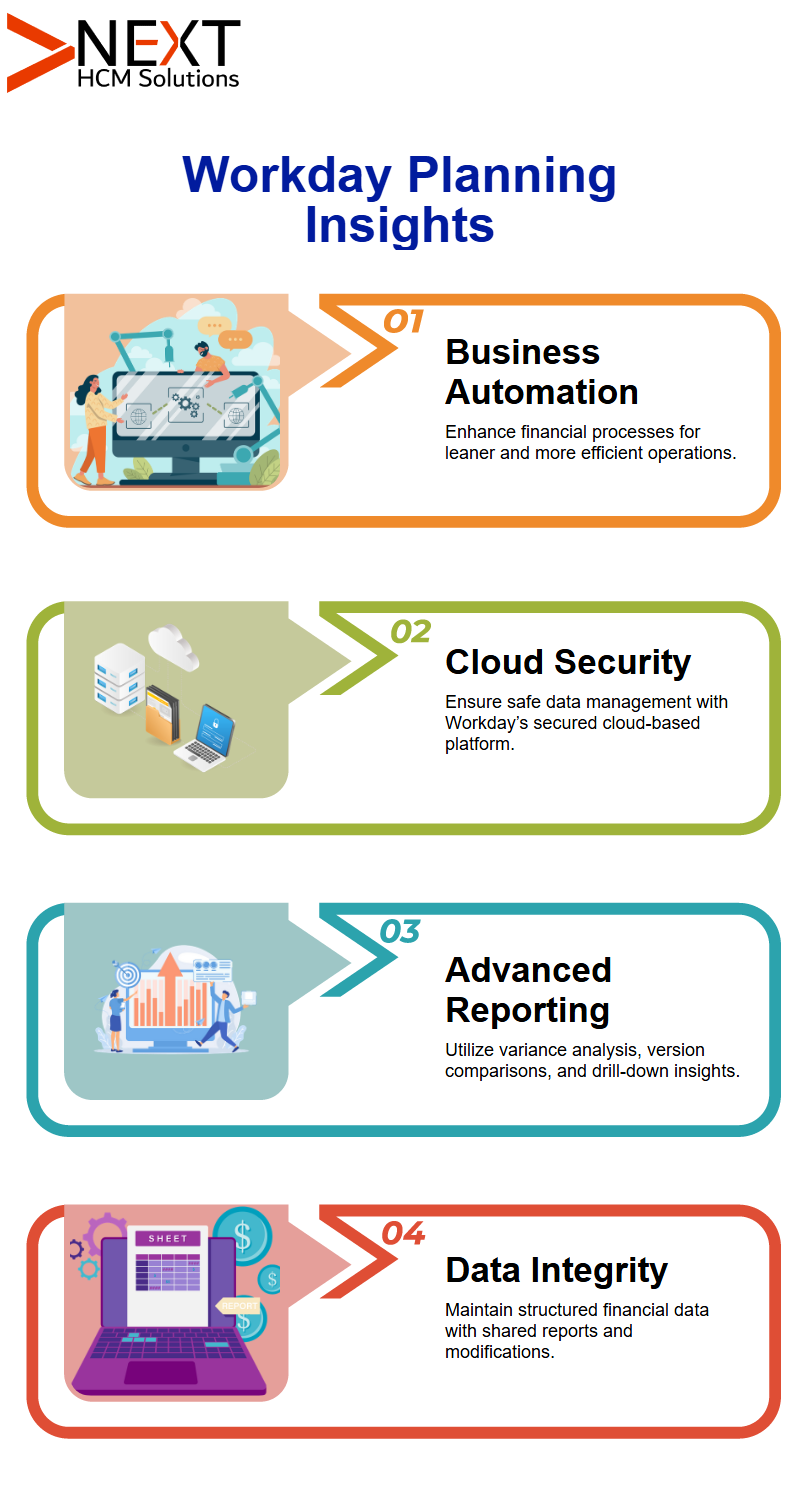
Securing to know Workday Adaptive Planning
Workday Adaptive Planning is a tool that enables you to generate comprehensive reports effortlessly. To get started, you will need to add accounts, time, and version.
The generated report will be available for editing, and once complete, it can also be easily formatted and made visually appealing.
A user interface on the front enables your portrayal only, whereas the server also protects the conditions that come with the definitive data treatment.
It is not feasible to directly change a cube sheet or model sheet into a report in Workday Adaptive Planning. Instead, a different report must be obtained that will provide an alternative view.
For example, if the sheet is to be used by other people, different perspectives and a certain level of hiding can be applied and still stay applicable.
Workday Adaptive Planning Training in Bengaluru helps users understand and effectively manage these features.
Access Control in Workday Adaptive Planning
From Workday Adaptive Planning, you can manage user access with fine-grained control. If an individual doesn’t have the service revenue, they are not allowed to view or edit it in the sheets and reports.
Guarded access standards ensure that unauthorised access to sensitive data is prevented, thereby protecting it from malicious attacks by adversaries.
Users can potentially cheat the system simply by removing a column or deleting rows. But, in the case of their perfect discernment of the system, they can restore the accounts; therefore, by blocking access at the account level, the security of the data is ensured. Workday Adaptive Planning Training in Bengaluru helps reinforce these practices among users.

Structure Reports in Workday Adaptive Planning
To construct a new report in Workday Adaptive Planning, you need to go to the report section and then choose ‘Personal Report’.
Use the ‘Add New’ option to build a new report. Metrics reports are comprehensive, making them highly productive for both financial and operational analysis. They cover every aspect of a matter.
During the operation of Workday Adaptive Planning, massive reporting occurs primarily through the use of the metrics report.
This complex tool combines data traceable through multiple models to provide a discerning observation can easily solved by getting hands on training via Workday Adaptive Planning Training in Bengaluru.
The point-and-click characteristic is the most effective way to create a report. As a result, users are given the ability to add as many levels, accounts, and periods as needed without any hassle.
Managing Characteristics in Workday Adaptive Planning
It takes some time for the new values to be reflected when we insert them into the dimensions in Workday Adaptive Planning, as taught in the Workday Adaptive Planning course in Bengaluru.
There is no other option for large amounts of data but to wait for the administering. The users will be in an elevated position to supervise their method if they understand the delay.
The report builder will be affected by all model adjustments, such as dimensions, elements, accounts, and levels.
Users should understand that developments in the model will have a direct impact on the report outputs.
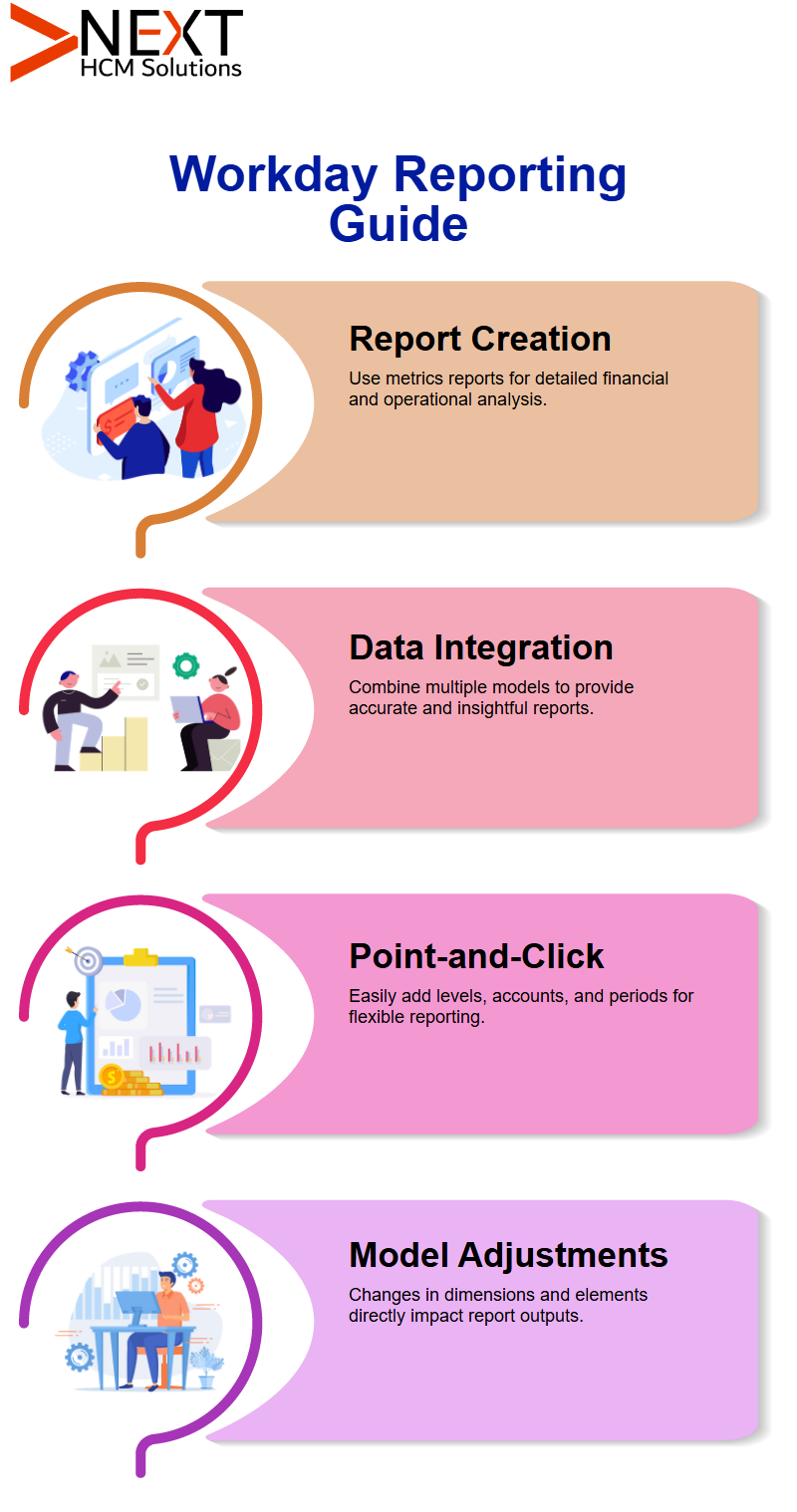
Bonus Tracks Report Creation in Workday Adaptive Planning
Workday Adaptive Planning offers a wide range of customised options. The number of accounts, time frames, levels, versions, and currencies is unlimited
Furthermore, characteristics such as account, level, and dimension elements can also be used to merge the data.
Moreover, such items as ‘Display As’ alternatives, calculations, and reusable reports also grant more flexibility in the reporting process.
As demonstrated in Workday Adaptive Planning Training in Bengaluru, A thorough understanding of the features will lead to a more efficient reporting process within Workday Adaptive Planning.
Learning Workday Adaptive Planning
The availability of Workday Adaptive Planning has completely revolutionised the financial reporting sector.
Expanding this period is easy — it only takes a few clicks, and you now have an integrated view of your financials. On top of that, Workday Adaptive Planning will allow you to combine multiple figures in a matter of seconds.
Suppose you want to collect a large number of data points, and the method requires using the Shift key.
Holding the key down and clicking on the last month can result in the entire quarter being moved in one shot.
Brilliant, right? Discussing efficacy in the context of Workday Adaptive Planning means ensuring the guaranteed presence of the account, time, levels, and version branches in each report.
Workday Adaptive Planning Training in Bengaluru supports a deeper understanding of these practices.
If these are left out, the picture is incomplete. Referring to that 40,000 number? It is the staff salary expenses for January at a particular store level.
Bringing on versions is easy. If you want to change the actual version of your period, you can do so by using the drag-and-drop property on the version over the time frame, and it is repeated for all months.
The compatibility of these two systems has a very positive impact on the usage of funds.
Additionally, the use of Workday Adaptive Planning has been beneficial for generating easy-to-use reports.
You can export the reports as HTML, PDF, or Achieve Excellence and supervise users and groups with access. Only if you stop sharing your reports will others not be able to see them?
An in-depth analysis of the data with Workday Adaptive Planning helps to expose the details of any area.
Any change in the numbers can be easily monitored with a roll-up, given that it encompasses the entire country, such as Germany, India, or specific cities. The roll-ups are the easy way to the final answers in reporting.
For a spot-on report, the key is how the costs are categorised. Workday Adaptive Planning enables users to classify and identify expenses as either fixed or variable, making it easy for them to manage their financial tracking. The way the costs are marked is the best solution.
Workday Adaptive Planning defines the interaction of financial professionals with data. Every move in the base, from multi-element drag-and-drop to sophisticated filtering, leaves no doubt of competence and user-friendliness.
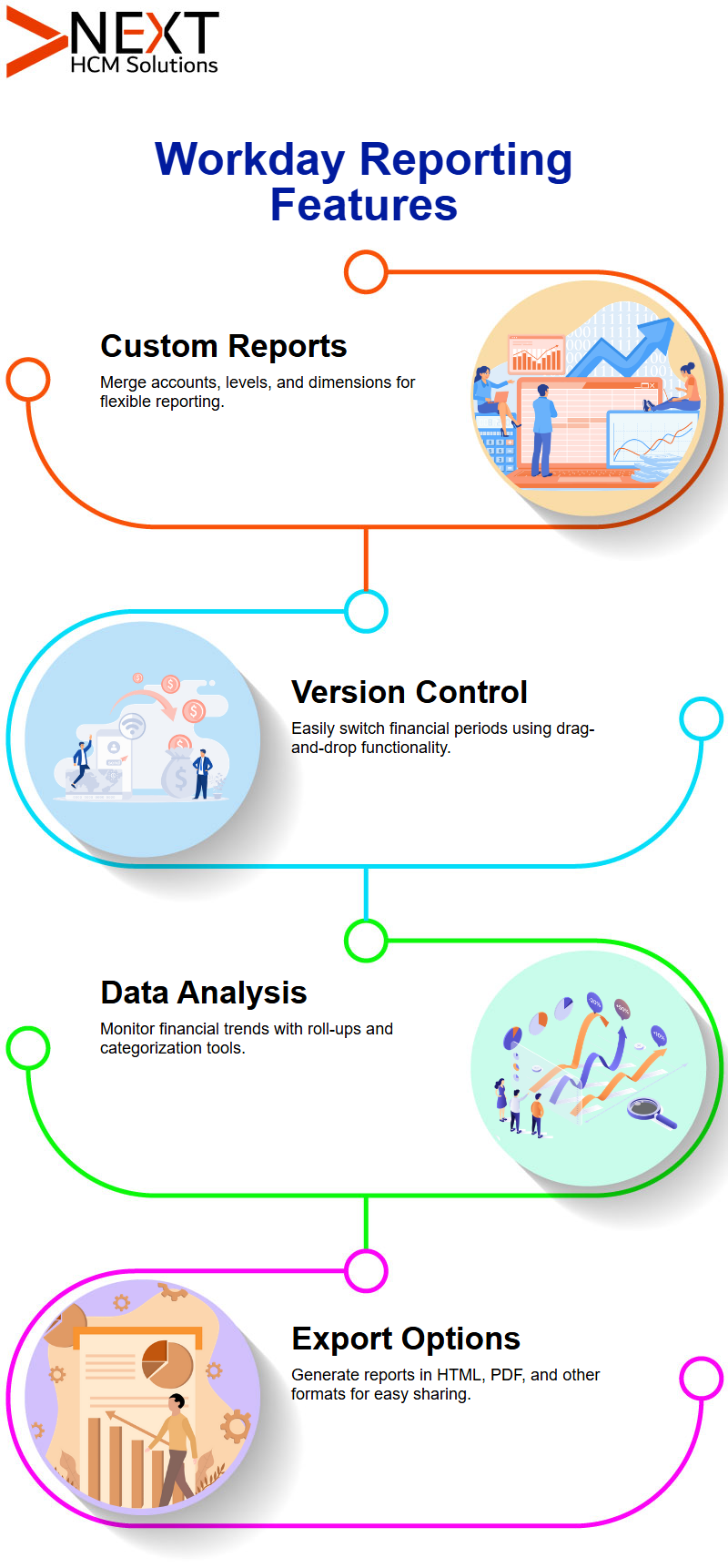
Perception Workday Adaptive Planning
The use of Workday Adaptive Planning is the choice of companies that wish to clarify their financial and operational planning, as highlighted in Workday Adaptive Planning Training in Bengaluru.
This constitutes its structure and features, which we will examine in more detail to fully appreciate the capabilities of the tool that is the topic of today’s discussion.
To operate in Workday Adaptive Planning effectively, utilising the first suitable support elements, such as levels, currencies, accounts, and features, is essential.
These key elements are essential for the foresight of the planning structure. Once they are prepared, you can develop an excellent model that is not only aligned with the business but also meets its needs.
Edifice Levels in Workday Adaptive Planning
The use of Workday Adaptive Planning is the choice of companies that wish to clarify their financial and operational planning.
To operate in Workday Adaptive Planning effectively, utilising the first suitable support elements, such as levels, currencies, accounts, and features, is essential. These key elements are necessary for the foresight of the planning structure.
Once they are prepared, you can develop an excellent model that is not only aligned with the business but also meets its needs.
Creating Properties and Accounts
The storage of financial data is a function carried out by accounts in Workday Adaptive Planning, while traits are employed on the economic data for tagging and categorisation.
Workday Adaptive Planning Training in Bengaluru can help users gain a superior understanding of characteristic usage.
Gaining an exceptional knowledge of characteristic usage in Workday Adaptive Planning will make users more confident when tracking their financial performance, as this more accurate tracking can also be leveraged for strategic planning at the organisation’s various levels.
Examining Standard and Cube Sheets
Workday Adaptive Planning presents three categories of sheets: Standard, Cube, and Model. Standard sheets in Workday Adaptive Planning enfold elementary elements such as accounts, periods, versions, and levels.
Workday Adaptive Planning Training in Bengaluru can help users clearly understand these distinctions.
In contrast, cube sheets broaden the range through the inclusion of additional dimensions and features, making them the best choice for complex financial modelling.
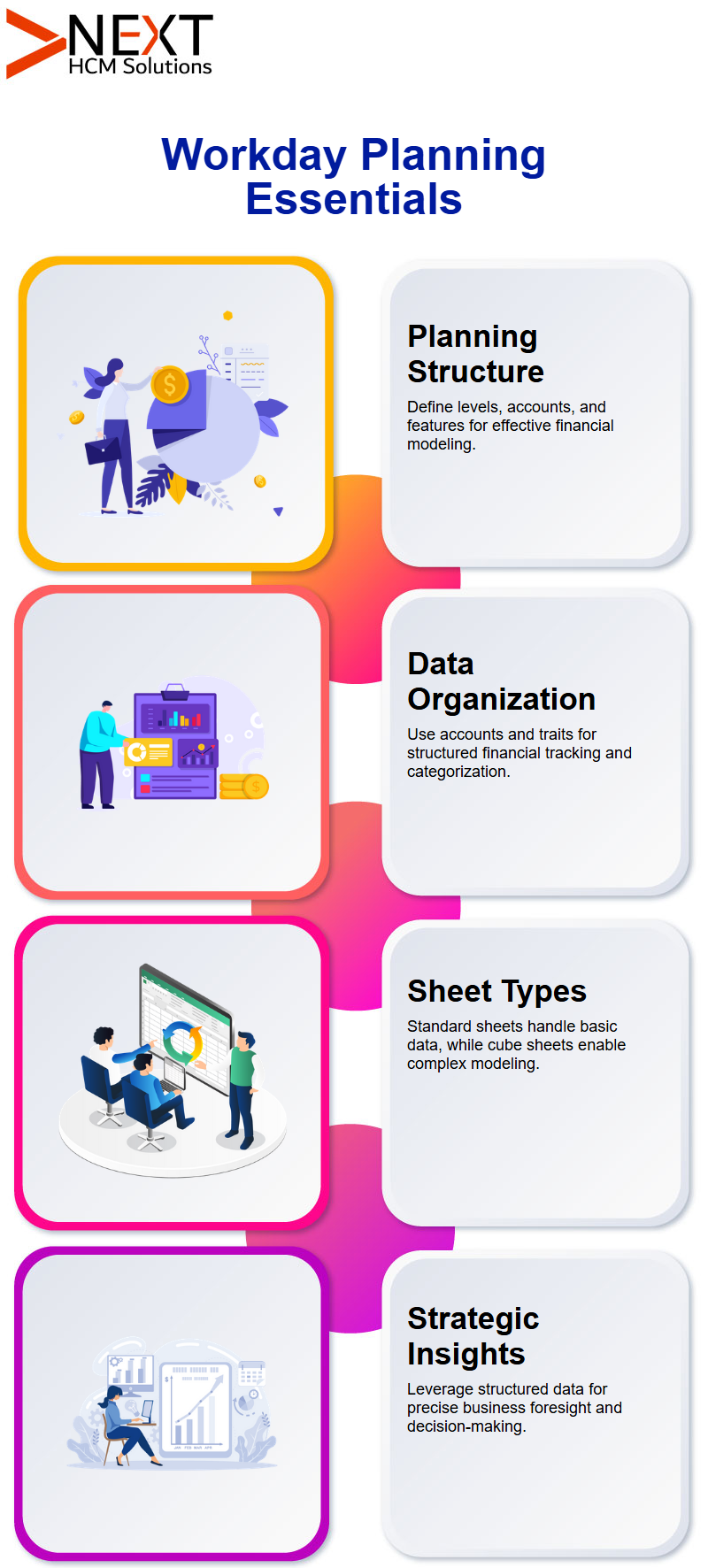
The Role of Dimensions in Workday Adaptive Planning
Dimensions used in Workday Adaptive Planning contribute to a consistent and systematic data relationship.
Properties assigned for encoding differ from the dimensions that users can utilise for improved data organisation and analysis.
Having a clear vision of when and where to use dimensions rather than characteristics in Workday Adaptive Planning is an indispensable prerequisite for accurate reporting.
Workday Adaptive Planning Training in Bengaluru helps gain an appreciation for differentiation, which is beneficial for planning models.
Insight Workday Adaptive Planning
Workday Adaptive Planning, a financial modelling application, is a multifaceted system that helps organisations in their planning and forecasting processes.
Today, releases learn about the vital components of the model—standard sheets and cube sheets—and are authorised to find out their differentials, if any.
One of the most asked questions is around the cube sheets and standard sheets – what is the difference? So, if you have ever considered this, Workday Adaptive Planning Training in Bengaluru will make sense for you.
When you generate a cube sheet in Workday Adaptive Planning, you are working with data that involves multifaceted calculations and is multidimensional in nature.
Standard sheets, meanwhile, are a lot easier than that in that they follow a set structure.
Sheets in Workday Adaptive Planning
Facilitate reviewing the sheet structure within the Workday Adaptive Planning system. Fluctuations in the versions, as well as the set of levels and dimensions, bring together a layout that is most fitting for a given organisation.
We use two types of sheets. These are level-assigned and user-assigned ones. Level-assigned sheets have their names closely related to the levels; that is, the availability of these sheets is limited based on the hierarchy.
The types of access to user-assigned sheets vary. To achieve the objective of having only one person, for example, Rene, access a particular sheet, the assignment is made at the user level rather than the broader hierarchical level.
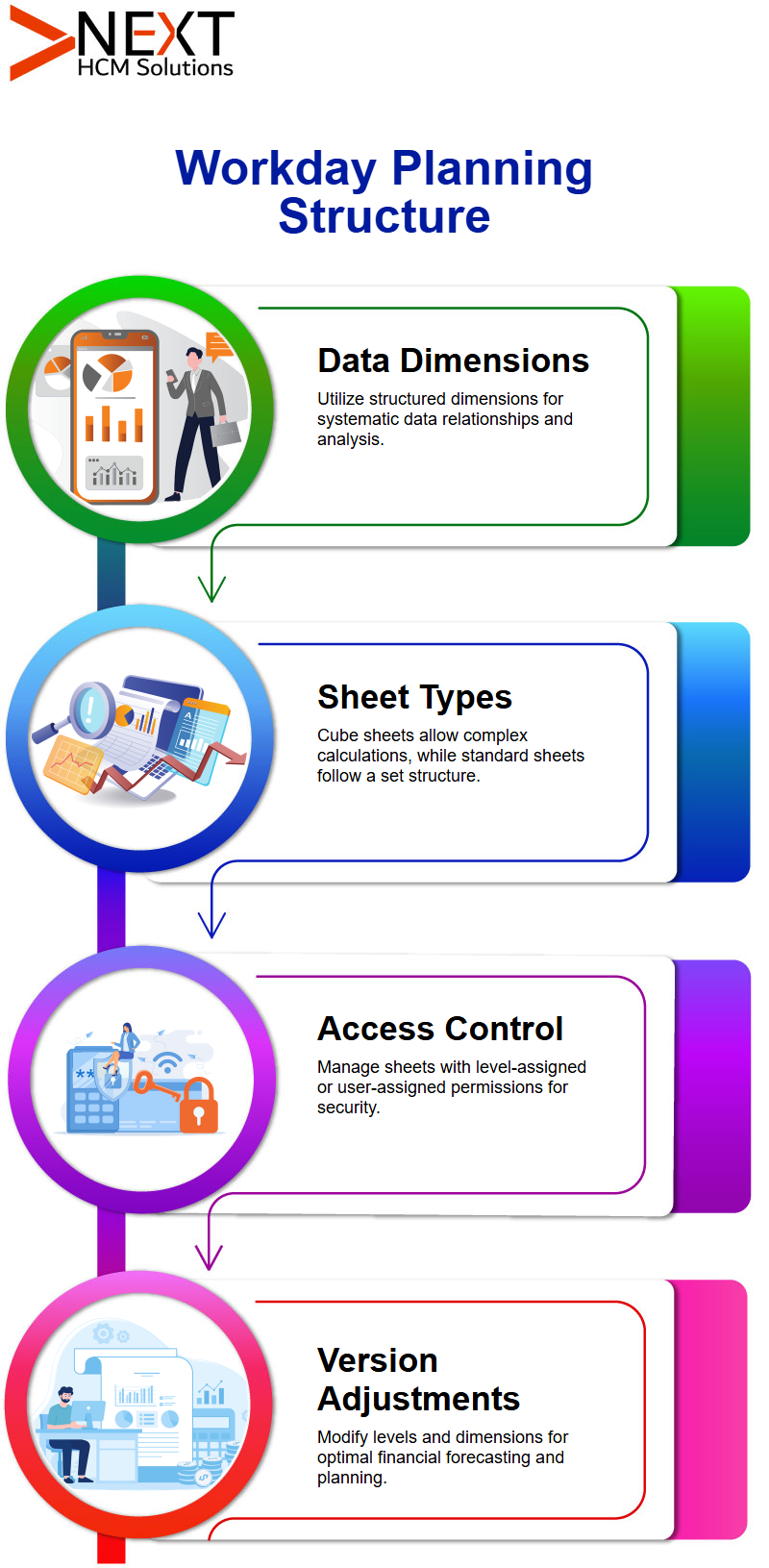
Standard Sheet in Workday Adaptive Planning
A standard sheet creation is effortless in Workday Adaptive Planning
Users can start performing data structuring in the modelling section and the respective allocated levels of the sheets.
One of the key components of the process—good, model, or cube—is the selection of the correct type of sheet that Workday Adaptive Planning offers, enabling users to tailor the sheet structure according to their planning requirements.
Security and Confidentiality in Workday Adaptive Planning
Security features have a significant impact on the performance of Workday Adaptive Planning. One of the challenges of working with a team that shares data is to keep the empathetic data secure while maintaining the imperative level of interaction.
Workday Adaptive Planning Training in Bengaluru guides in understanding how an user managing access controls.
For illustration, if we have multiple regions in our organisation and want only certain ones to access a sheet, we can restrict it accordingly.
How Workday Adaptive Planning Controls Accounts and Hierarchies
Workday Adaptive Planning focuses its main performance in the area of Accounts, where its knowledge acts as a backbone in achieving a productive day-to-day usage.
The three components — calculated accounts, metric accounts, and routine accounts — in Workday Adaptive Planning are designed for writing formulas and structuring data, similar to Excel sheets.
Each has a separate function, so users are more than welcome to choose the one that best suits them.
Reengineering Financial Models with Workday Adaptive Planning
Workday Adaptive Planning Training in Bengaluru ensures businesses can utilise both a clearly defined and flexible structure, utilising cubes and standard sheets, while maintaining error-free data. During the transformation, the stage continually refines and improves the data.
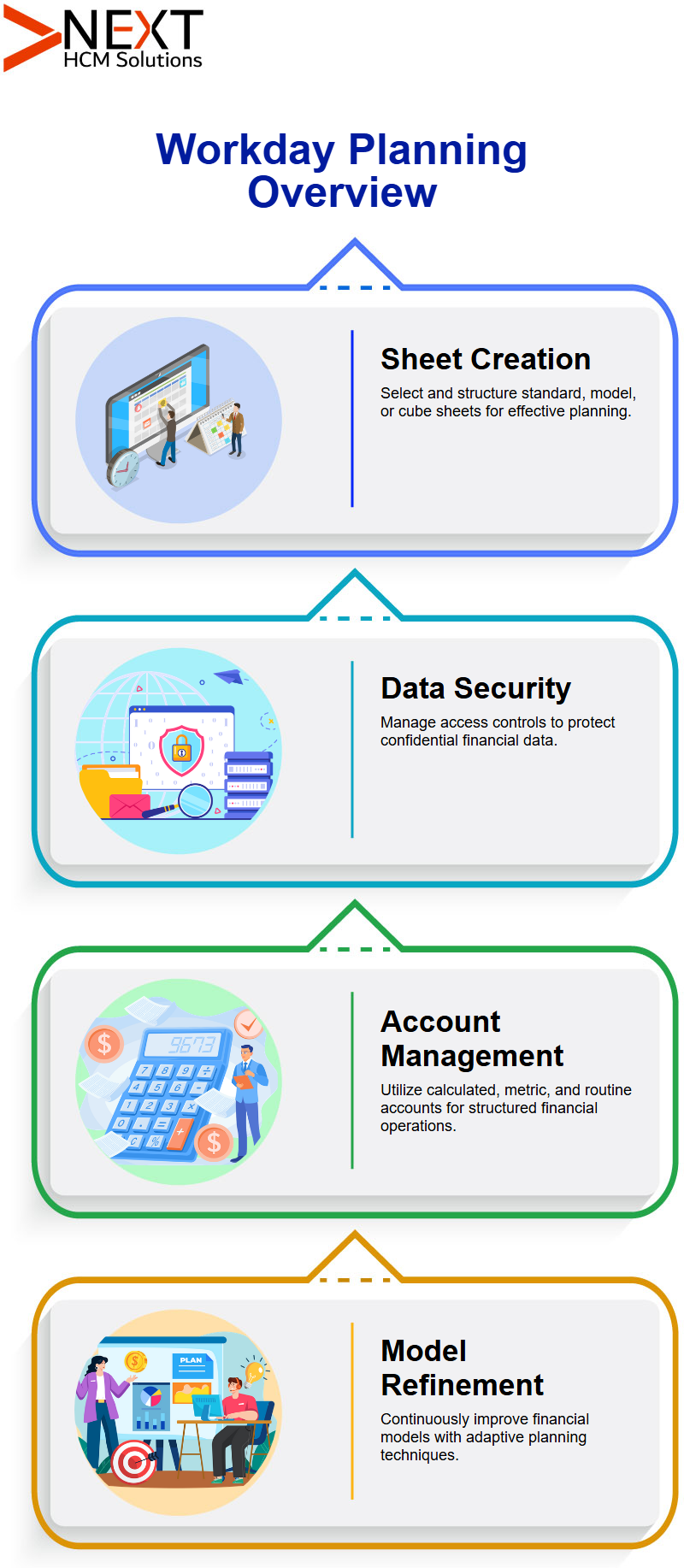
How to Set the Time and Versions in Workday Adaptive Planning
Changing time settings is handled lucidly and easily in Workday Adaptive Planning. Even features may not be available in a demo tenant; still, month-wise defaults greatly uncomplicate the process.
Workday Adaptive Planning Training in Bengaluru helps in learning to configure these settings.
By promptly tracking revisions from one fiscal year to the next, businesses are 100% certain that the planning sequence has the straightest path to success while maintaining error-free data.
During the transformation, the stage continually refines and improves the data.
Creating the Structure of Groups and Chains of Command in Workday Adaptive Planning
Setting up hierarchy structures in Workday Adaptive Planning is very easy. Regardless of the location we work with, we can always explain the levels, such as India, Mumbai, or structures that can be expanded across various locations. The tool will maintain continuity.
By methodically naming levels, errors are reduced, and confusion is minimised. Workday Adaptive Planning confirms that organisations can classify their data more accurately and productively, thereby enabling systematic decision-making.
Account Structures in Workday Adaptive Planning
Once the accounts are defined, the import process makes setup quick and productive. This is the next important step in Workday Adaptive Planning, which involves simply managing accounts without affecting the original data.
Recognising the distinction between general ledger (GL) accounts and customer accounts is a crucial point.
Naming conventions are an essential rule because they can best avoid equivocation. Similarly, Workday Adaptive Planning streamlines this process, ensuring that financial data is structured and formulas are error-free, ready for future calculations.

